In the previous announcement, I mentioned that several experimental plugins were in development. Today, I would like to reveal the first - a side project of ours which has been in the making since the beginning of 2023, and is slowly approaching fruition: CampaignWar (CW), an attempt to design a war system that combines the strengths of the various existing Towny war plugins.
In its current form, CW is not designed for Nations. It will be tested on its own gamemode¹ at an indeterminate point in the future, alongside several other experimental plugins. It may then transpire that these plugins are fundamentally flawed in some fashion and will need to be scrapped or reworked. But such is the nature of game development: you cannot know if you do not test.
Provinces
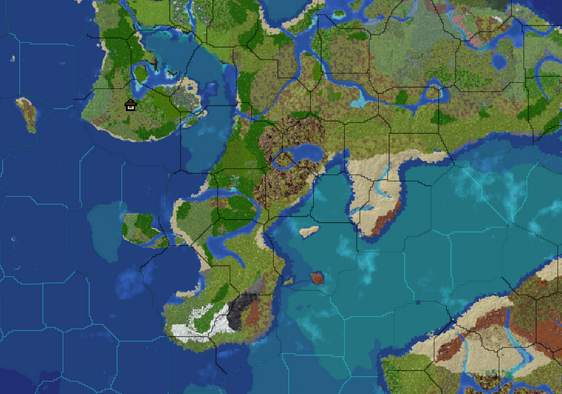
To understand CW, we need to understand the intended map: a continental non-Earth world divided into provinces. There are two types of provinces: ocean and land. For now, we are only interested in land provinces. Each land province can accommodate one town, and only that town is permitted to claim inside it.
Attacking Provinces
During a war, the objective is to capture enemy land provinces. To attack an enemy province, you need to capture or own an adjacent province. Which enemy provinces you choose to attack might be influenced by the war goals, which we’ll discuss another time.
When a province attack (“PA”) starts, the province is assigned HP. HP consists of:
- A base value that is shared by all towns
- A bonus number that depends on the town's number of residents and claimed chunks
The attackers’ goal is to deplete the province’s HP by killing enemies and capturing chunks inside the province. If the HP reaches 0, the attackers win the PA. Defenders, on the other hand, heal the province’s HP by killing attackers and recapturing chunks.
Capturing Chunks
Capturing chunks is the main method of depleting a province’s HP. All chunks inside the province can be captured, but some chunks are worth more HP than others: the homeblock is worth the most, then regular claimed chunks, followed by Wilderness.
You can only capture a chunk if you have captured an adjacent chunk, or if the chunk is adjacent to the province’s border. That means attackers must invade the province from the border at the beginning of the PA.
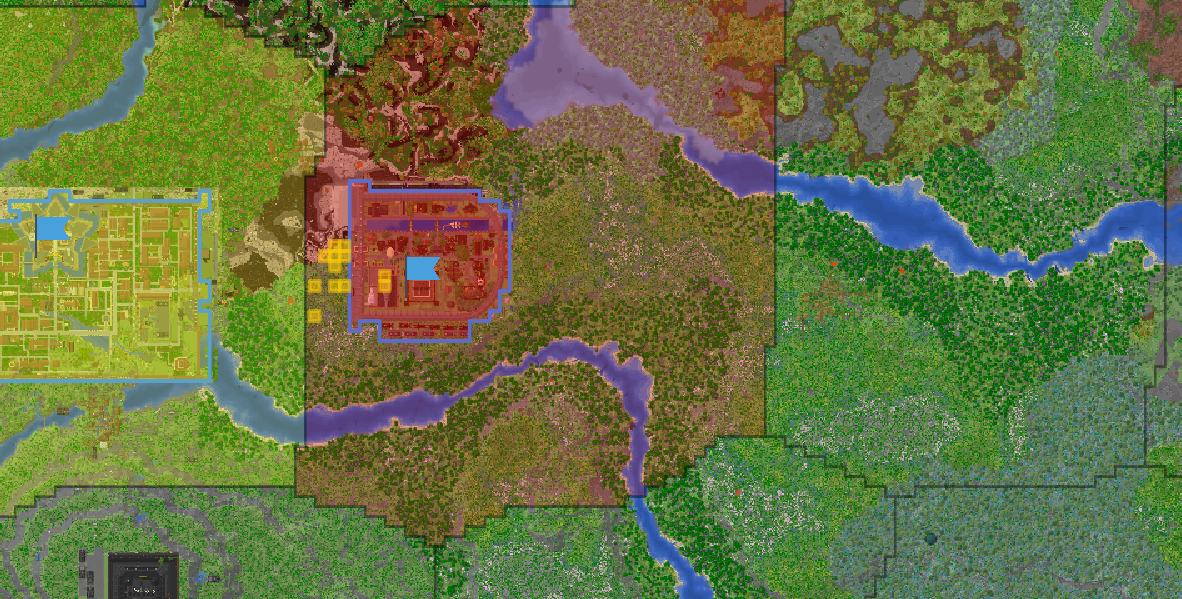
Above is an example. Yellow captured chunks in Red, advancing from the border. However, Red then recaptured some of these, leaving many of Yellow’s gains isolated.
Capturing a chunk is simple: place an obsidian block (a “flag”) inside the chunk, and prevent the enemy from breaking it for 60 seconds. As long as friendly players are close to the flag, enemy players will suffer from Mining Fatigue while trying to break it.
Some automatic rules are enforced on flag placement. Notably, they can be placed neither underground nor underwater. Moreover, when defenders counter-attack a captured chunk, the flag will be moved to where the attackers originally placed it. This prevents defenders from placing flags in strange areas unreachable to attackers, such as inside town buildings or on top of tall towers. And to discourage defenders from boxing in attackers, they have a cooldown between placing blocks inside the town if its claims are under attack.
To maintain the flow of battles inside towns, attackers can place scaffolding and ladders inside chunks they are attacking or have captured. They can also use doors, trapdoors, etc in these chunks.
Tools
Both sides can attack three chunks simultaneously. “But won’t this get overwhelming?”, you may reasonably ask. Fortunately, there are tools to help with orientation and coordination.
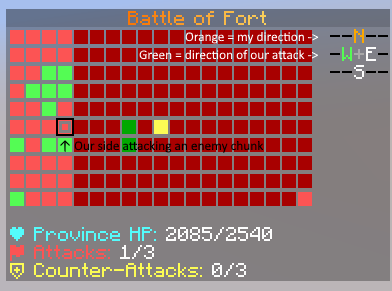
The first is the war map. Here’s the war map HUD (/warmap hud) from inside Red’s town. Enemy-controlled chunks appear as red, while friendly-controlled chunks appear as green. The darker chunks are claims; the lighter chunks are Wilderness. I’m a member of Yellow, so the chunks that Red controls appear as red.
Chunks under attack have a special icon, and the compass directions will change colour if there is an attack in that direction. In this case, my side’s attack is west of me, so W appears as green. If it was an enemy attack, it would have appeared as red.
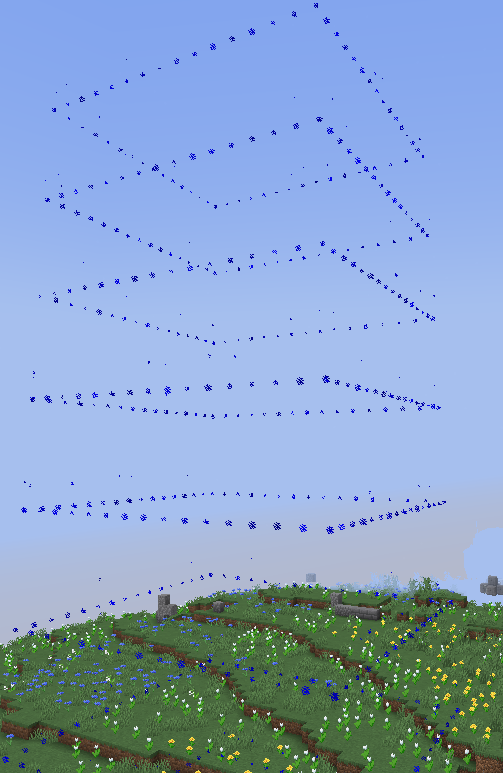
Furthermore, attacked chunks have a particle border and their flag block will glow. The colour of the glow and particles depends on whether the attack is hostile or friendly: red = hostile, blue = friendly.

Lastly, players with the relevant nation rank can broadcast a priority message (/prioritymsg) to all friendly players inside the province.
FOBs
Deaths are frequent in these fast-paced wars, yet it is critical for attackers to maintain momentum. To address this, they can designate any of their captured Wilderness chunks as a Forward Operating Base (/fob) and teleport to it. It will appear as a tent on the war map.
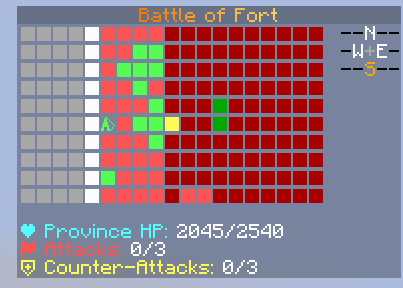
FOBs are immune to explosion block damage and defenders cannot place, break or open blocks inside them (except flags, scaffolding and ladders). But if defenders recapture the FOB's chunk, the FOB is destroyed and attackers will no longer be able to teleport to it.
Citadel Plots
For this war system to work, every province must be attackable. They will therefore need fortifications, but we do not want to force every town to become a Nations-style fort². Citadel plots are our solution.
Citadel plots are special town plots in which explosions will not do block damage - up to a certain point. Every citadel plot has armour points (AP) which are depleted when an explosion takes place inside them. The amount of AP lost depends on the cannon projectile used. For example, tank MG shells do nothing while HE shells inflict heavy damage. Once a citadel plot runs out of AP, it will no longer prevent explosion block damage.
The colour of the firework changes as the citadel loses AP.
The number and types of blocks inside the citadel plot do not affect its AP. This is to ensure builders can design aesthetically pleasing fortifications without having to sacrifice defensive capability.
Citadel plots have some limitations. Firstly, they won’t protect piloted crafts and cannons that are being actively fired. Secondly, towns have a limit on the number of citadel plots they can have, which increases proportionally to their number of claims. Finally, there is a limit on how many citadel plots can be adjacent to one another and it is possible they will have to be adjacent to Wilderness.
Conclusion
To keep this digestible, many details have been omitted such as the intended combat system and how wars themselves work. These deserve their own posts, which will be released in the future.
In the meantime, if you are interested in testing CW, please let me know by replying to this post. While several playtests have already been held, I would like to hold a large-scale battle to test the pace of attacks and how larger groups cope with coordinating in this environment.
If you have any questions, feedback or concerns about CW, feel free to also reply. Your input is valuable and may reveal areas for improvement that have not yet been thought of.
¹ Which will not be Nations 3.. sorry, reset fans. It also won't replace Nations, or anything like that. Think of it as a giant experiment.
² The Block HP system on Nations is actually a holdover from our Factions gamemode, which ended well over five years ago. Yikes!
Last edited: 12 months ago x 5


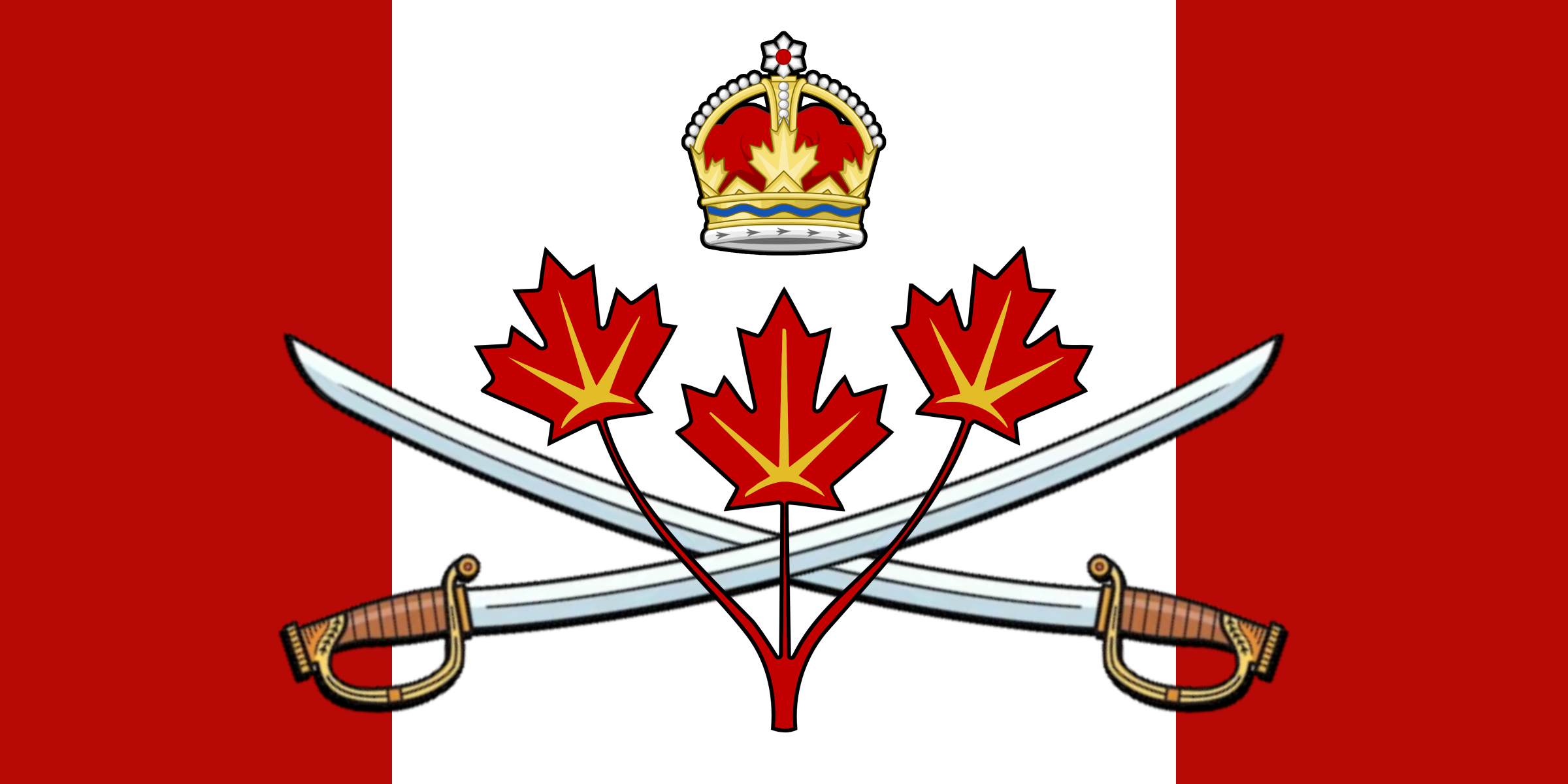
 . I'd love to help test
. I'd love to help test